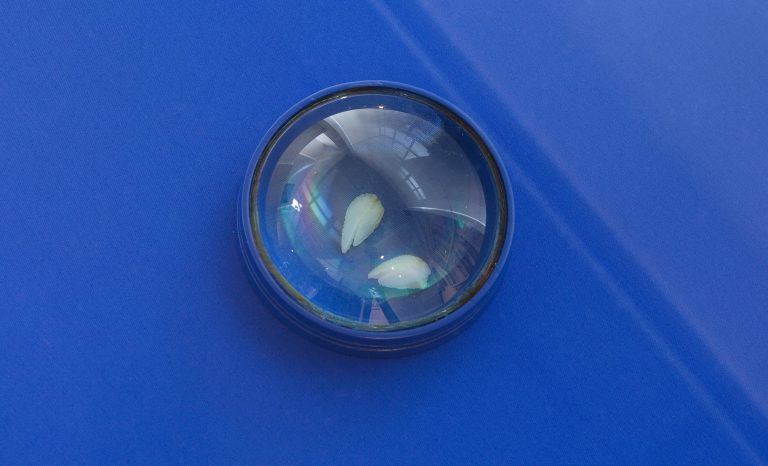WHAT IS AN OTOLITH?


Otoliths are earstones (oto = ear, lith = stone) in the inner ear of all bony fishes. Fish use their otoliths for balance and hearing, sensing small changes in the direction and pressure of water. In fact, these biomineral structures are in all vertebrates. In the human inner ear, they are a paste of tiny little crystals called otoconia that behave in a very similar way. Vertigo is an ailment typically caused by otoconia disorder.
Fish grow continually, for their entire lives. As a result, otoliths need to keep growing as well. In bony fish, this happens by a layer of material being deposited on the growing otolith every day. If an otolith is cut in half, it looks like a tree trunk – with daily and seasonal rings being able to be easily seen. As we cannot ask a fish how old it is, and that (like humans) length is not necessarily a good way to distinguish between older fish, otoliths are used instead. Fisheries scientists routinely estimate fish ages by counting otolith growth rings.
Researchers also use otoliths to reconstruct fish life histories. As the water around a fish is constantly changing (either through it flowing or the fish moving), the trace chemistry of an otolith ring will also change. Basically, as an otolith ring is formed, some trace salts from the environment also get incorporated into the ring. For example, the metal strontium is associated with salinity. If a researcher looks at the way that strontium levels change from the centre (the part formed when the fish was still in its egg) to the edge of the otolith (the last ring that it made before death), they can reconstruct what season a fish was in salty water, and what season it was in freshwater. This is pretty useful to know if you’re a fisherman trying to catch a migrating fish like salmon! Scientists can also use the chemistry of otoliths to work out a lot of other useful things about fishes’ lives. They can work out which fish were born at the same time in the same place, what kind of habitats they were living in, what the water temperature was like (useful for Climate Science) and much more!
Dr Ollie Thomas
School of BioSciences, The University of Melbourne
